
Food was an important part of court life at the Tudor palaces
What did the Tudors eat?
For the Tudors, food and meals were not just about eating. They were a display of the monarch’s power. Exotic foods demonstrated wealth, while seating arrangements reflected the court’s hierarchy.
Courtiers were served a menu of dishes containing around 5,000 calories a day.
Who could eat meat in the Tudor era?
By Henry VIII’s reign, the price of fresh meat had fallen sufficiently. When it was available, the average Tudor family could afford it.
The century before, poorer families would have rarely enjoyed meat, eating a diet of stewed vegetables and pulses. But the norm for 'average' people in the Tudor period was stored or preserved meat – fresh meat was the luxury of the court.
Tudor courtiers enjoyed a much wide variety of food, with freshly, slaughtered, roasted meat every day and the luxury of being able to choose from a 'menu' of dishes.
The quantities of meat procured for the royal court in one year during Elizabeth I's reign included:
- 8,200 sheep
- 2,330 deer
- 1,870 pigs
- 1,240 oxen
- 760 calves
- 53 wild boar
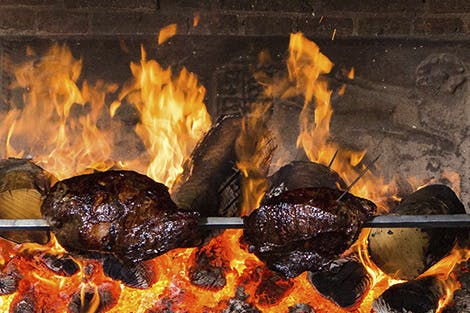
Image: Tudor meat on the spit at Hampton Court © Historic Royal Palaces
And if they [the nobles and many of their servants] do not have 20 varied meat dishes at dinner and supper, they consider themselves slighted.
Thomas Starkey, Oxford lecturer, c1529
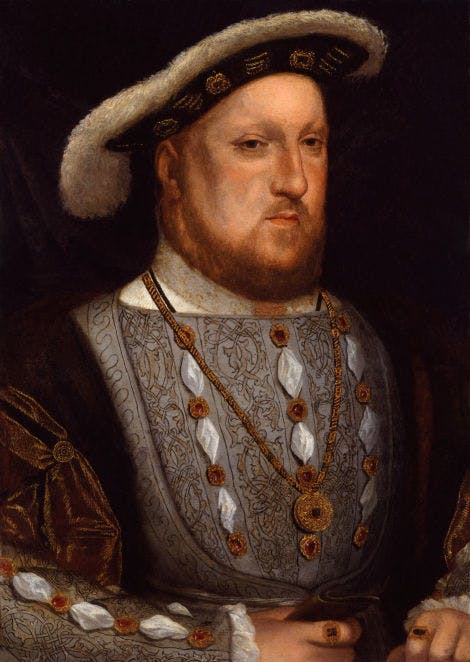
Image: Portrait of Henry VIII. @ National Portrait Gallery
What did Henry VIII eat?
As a Tudor King, Henry VIII ate whatever took his fancy from a huge buffet. Dishes included game, roasted or served in pies, lamb, venison and swan. During banquets, he might be served more unusual items such as conger eel and porpoise. Sweet dishes were often served along with savoury.
The King's meals were prepared in a private kitchen under the direction of the Privy (Private) Master Cook, John Bricket. Usually, the King ate in his private rooms, away from the crowds. On more formal occasions he sat alone at a high-covered table in his Presence Chamber, under the canopy of state.
The King was the only person at court to be given a fork, with which he ate sweet preserves. Forks were used to serve, cook and carve, but eating with them didn’t become popular until the 17th century.
A royal menu
The ‘Diett for the King’s Majesty and the Queen’s Grace’ for 'Dynner' included:
- First Course: Cheat Bread and Manchett, Beare and Ale Wyne, Flesh for Pottage (thick broth), Chines of Beef, Venison in Brew’z or mult’, Pestells of Reed Deere, Carpes of Young Veale in Arm’ farced, Custard garnished, or Fritters
- Second Course: Jelly, Ipocras, Creames of Almonds, Pheasant, Hern, Bitterne, Shovelard, Cocks, Plovers or Gulles, Larkes or Rabbits, Venison in fine past, Tarts, Fritter
Food and wealth
In Tudor times using ingredients from distant countries was considered a sign of status. The variety of food available at court was staggering. Royal diners ate citrus fruit, almonds and olive oil from the Mediterranean.
Food was sweetened with sugar from Cyprus and seasoned with spices from China, Africa and India.
Sit not down until you have washed. Don't shift your buttocks left and right as if to let off some blast. Sit neatly and still.
Dutch writer Erasmus' list of instructions for dining at court
The rules of eating at court
Around 400 courtiers were entitled to two meals a day, served at 10am and 4pm. A strict set of rules, drawn up by the Lord Chamberlain, dictated where diners sat and what they were entitled to eat. Higher-ranking courtiers ate in the Great Watching Chamber, lesser ranks in the Great Hall.
The Clerk of the Kitchens, standing at the Serving Place, would allocate dishes to various diners according to their rank.
Take a look around the Great Hall on our 360-degree image, created in partnership with Google Arts & Culture.
For the lowliest servants there was little choice, but food was part of their wages for being at court. A daily menu for ‘Maides, Servants, Children of Offices, Porters and Skowerers’ lists two meals of ‘Bread, Ale, Beefe and Veale, or Mutton’
Each meal had two courses served in messes – portions that would be shared between four people. Diners used napkins to cover their laps.
It was considered rude to finish everything at the table, not least because others depended on leftovers. These were distributed to the ‘deserving poor’ at the palace gates.
Table manners were considered vital if entering polite society.
Did you know?
In the Great Hall, diners would sit under 'Eavesdroppers' – painted carved faces on the ceiling – which served as a reminder that they shouldn’t gossip.
A food production line
Ordering, preparing and cooking food on this scale required an efficient system, with raw food arriving at one end and finished dishes ready to be served at the other.
Henry VIII expanded and added to the kitchens at Hampton Court Palace. Originally these 'Great Kitchens' were used for roasting meat, mainly joints of beef, in front of six huge fires.
In later centuries, a range of charcoal stoves were added along with a bread oven.
Take a look around Henry VIII's kitchens on our 360-degree image, created in partnership with Google Arts & Culture.
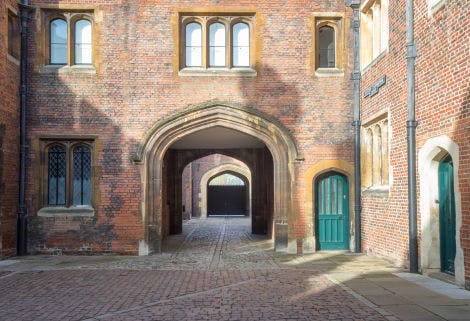
Image: Seymour Gate at Hampton Court Palace, looking west from Master Carpenter's Court. © Historic Royal Palaces
Raw materials
Raw produce was brought into the palace through a ‘Tradesman’s’ entrance.
All goods passed under an archway into a cobbled courtyard, where they were all unloaded and checked scrupulously.
A team of accountants, known as ‘The Clerks of the Green Cloth’, kept meticulous records to ensure costs were kept under control.
Kitchen staff carried the goods into a series of smaller kitchens or to the stores.
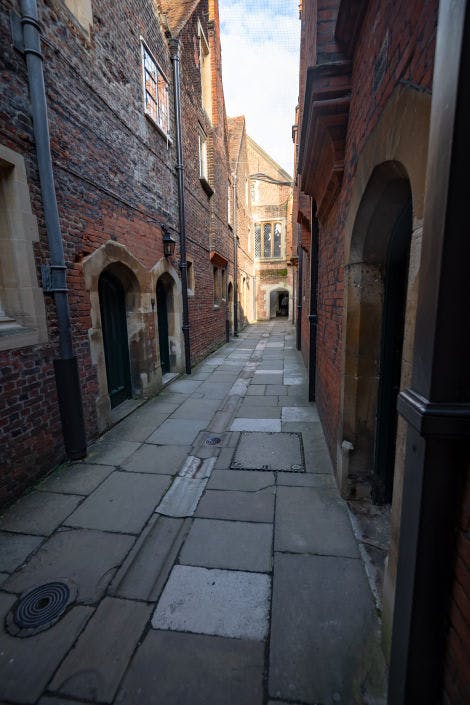
Image: Fish Court at Hampton Court Palace. © Historic Royal Palaces
From kitchen to table
Preparing and storing food for the Tudor court
The kitchens at the Tudor court produced a large amount of food and each room had a specific function. Food would be taken from larders and prepared in separate bake-houses. Meat was roasted in front of the big fires in the Great Kitchen.
Fresh water for drinking and cooking was piped into the palace from springs three miles away.
The Boiling House
The Boiling House was one of the many smaller kitchens in Henry's complex. It was used exclusively to prepare and cook meat in the great boiling pot.
The meat then went into pies or was roasted, the boiling being used to reduce the time needed on the spit. The pie cases were brought over to the boiling house from the pastry department.
From the Boiling House, courtiers and servants traversed the surrounding cloisters to take their food into the Great Hall or Watching Chamber.
Fish Court
Fish Court is a clever fridge system. The courtyard is narrow, running north to south which means the area stays cooler, as the sun does not shine directly in. The space is open to the air to keep the stone stores cool.
Each side of the courtyard is lined with doors to storerooms and smaller kitchens called Working Houses, where more complex dishes were made.
The Serving Place
Once the food left the kitchens, it was transferred to the Serving Place, where dishes were collected and prepared for presentation. Nearby, the Wine Cellar stored the finest wines from across Europe, ready to be enjoyed by the court alongside their meal.
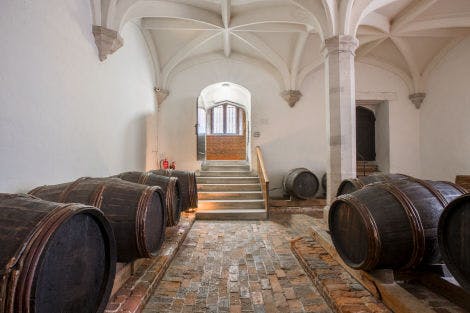
Image: The wine cellar. © Historic Royal Palaces
Henry VIII's Wine Cellar
All of this food was washed down at court with gallons of wine and beer.
Entertaining the court in lavish style reflected the magnificence of the monarch and Henry kept his cellars well stocked.
Barrels of wine were sent from Europe and kept in cellars next to the kitchens, while beer was stored close to the Great Hall. Water was safe to drink at the palace.
Explore Henry VIII's Kitchens at Hampton Court
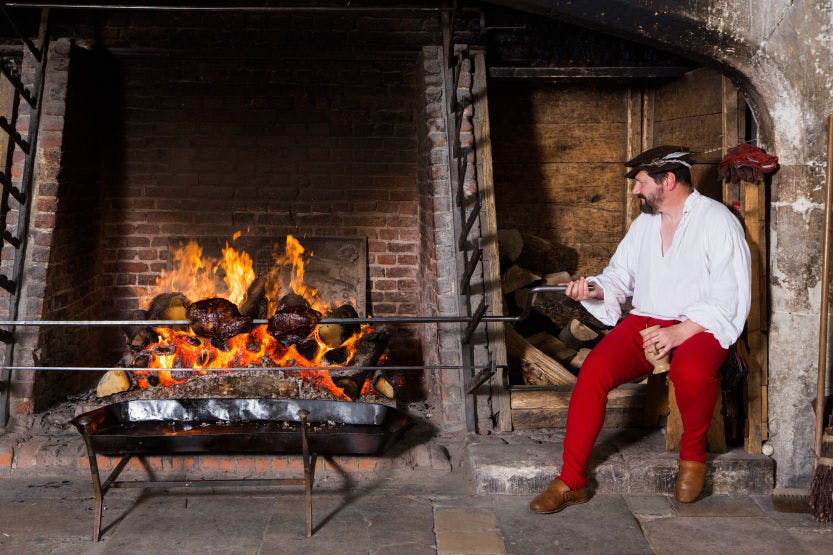
Virtual Tour: Henry VIII's Royal Kitchens
Discover more about Henry VIII's Royal Kitchens with our interactive story, created in partnership with Google Arts & Culture.
Browse more history and stories
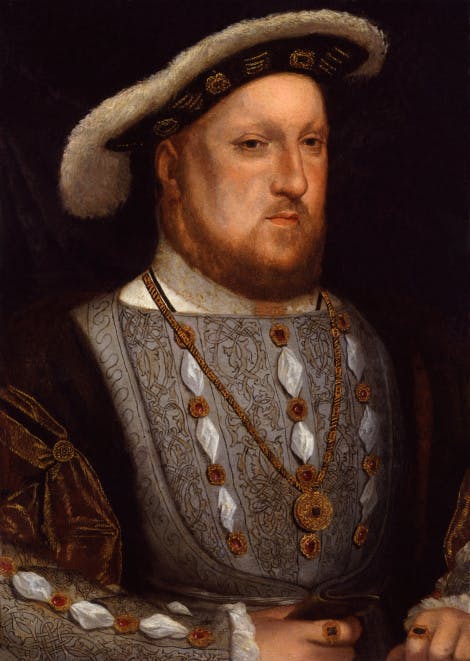
Henry VIII
Who was the real Henry VIII?

The Field of Cloth of Gold
Henry VIII's historic meeting with his great rival François I in 1520 was a defining point in his reign

The Elizabethan era: a golden age?
Was the Elizabethan period really a 'golden era' of English history?
Explore what's on

- Families
- Half term
- Things to see
February Half Term
Join a royal quest this half term with Elizabeth I at Hampton Court Palace.
-
14 – 22 February 2026
- 10:00-16:00
- Hampton Court Palace
- Included in palace admission (Members go free)
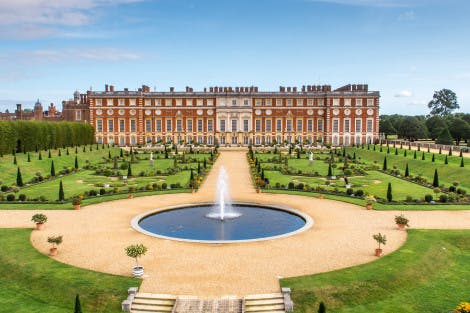
- Things to see
Hampton Court Gardens
Take time to explore and relax in these world-renowned gardens and find our free entry Garden Open Days dates.
- Open
- In line with palace opening hours
- Hampton Court Palace
- Included in palace admission (Members go free)

- Things to see
Kitchen Garden
Experience the recreated Kitchen Garden, which would have fed the Georgian royals and now supplies Henry VIII's Kitchens.
- Open
- In line with palace opening hours
- Hampton Court Palace
- Included in palace admission (Members go free)
Shop online
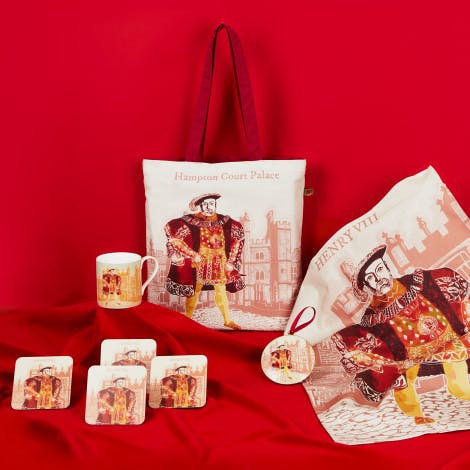
Shop Tudors
Find the perfect gift for collectors and history enthusiasts in our treasure trove of souvenirs inspired by this ever-fascinating dynasty.
From £3.00

Shop Goblets & Tankards
Discover our decadent range of goblets and tankards inspired by the palaces in our care, the perfect gift for any history fan.
From £10.00
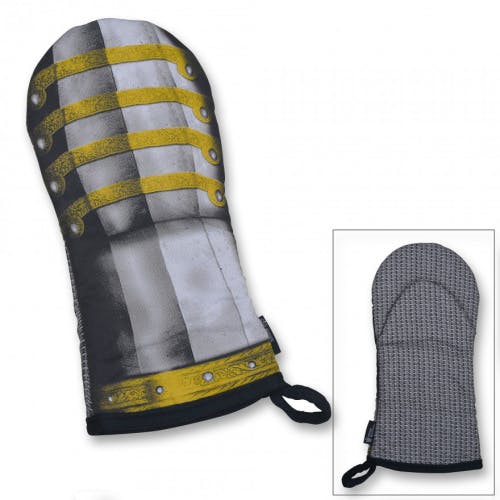
Henry VIII Gauntlet Armour Oven Glove
This fun oven glove is inspired by a suit of armour made for Henry VIII in 1540, currently on display at the Tower of London.
£18.00
